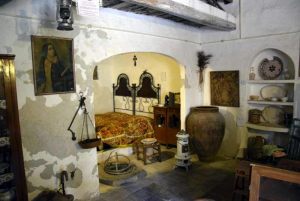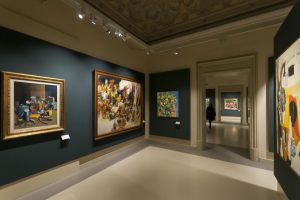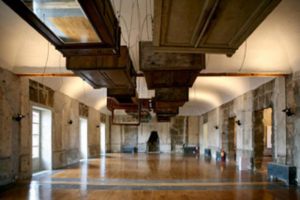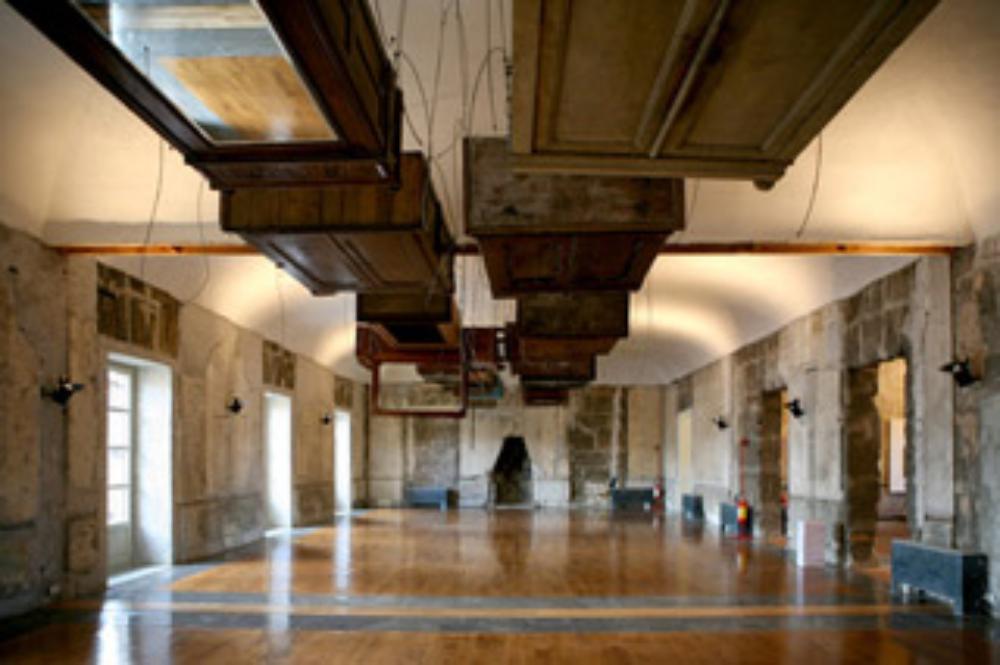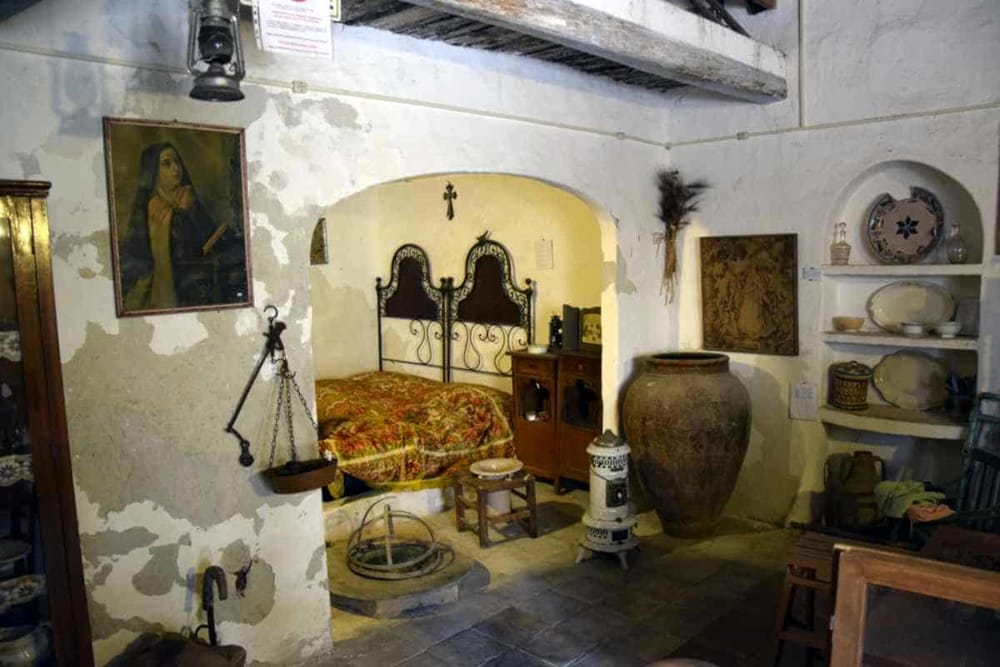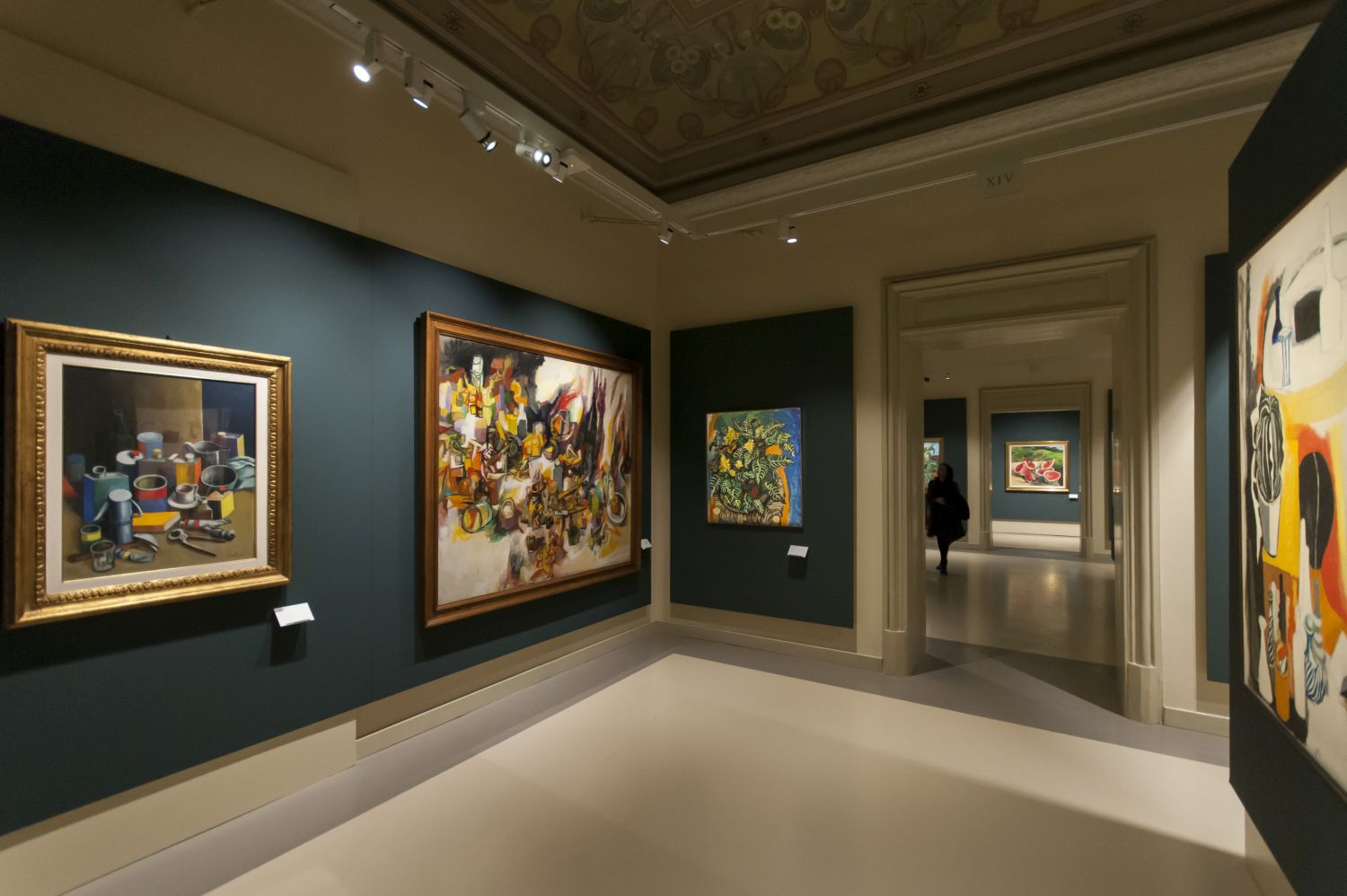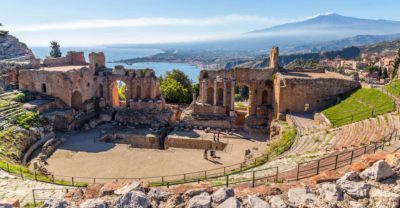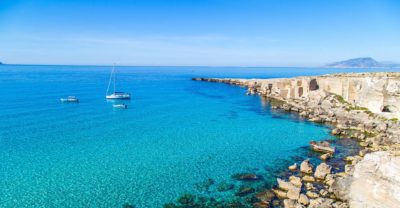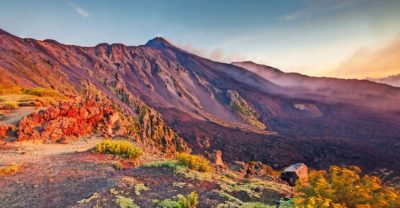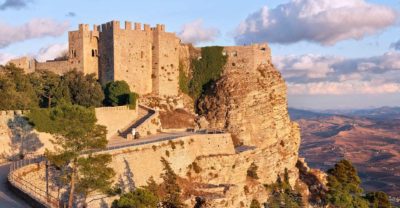Arts and Culture
Palermo
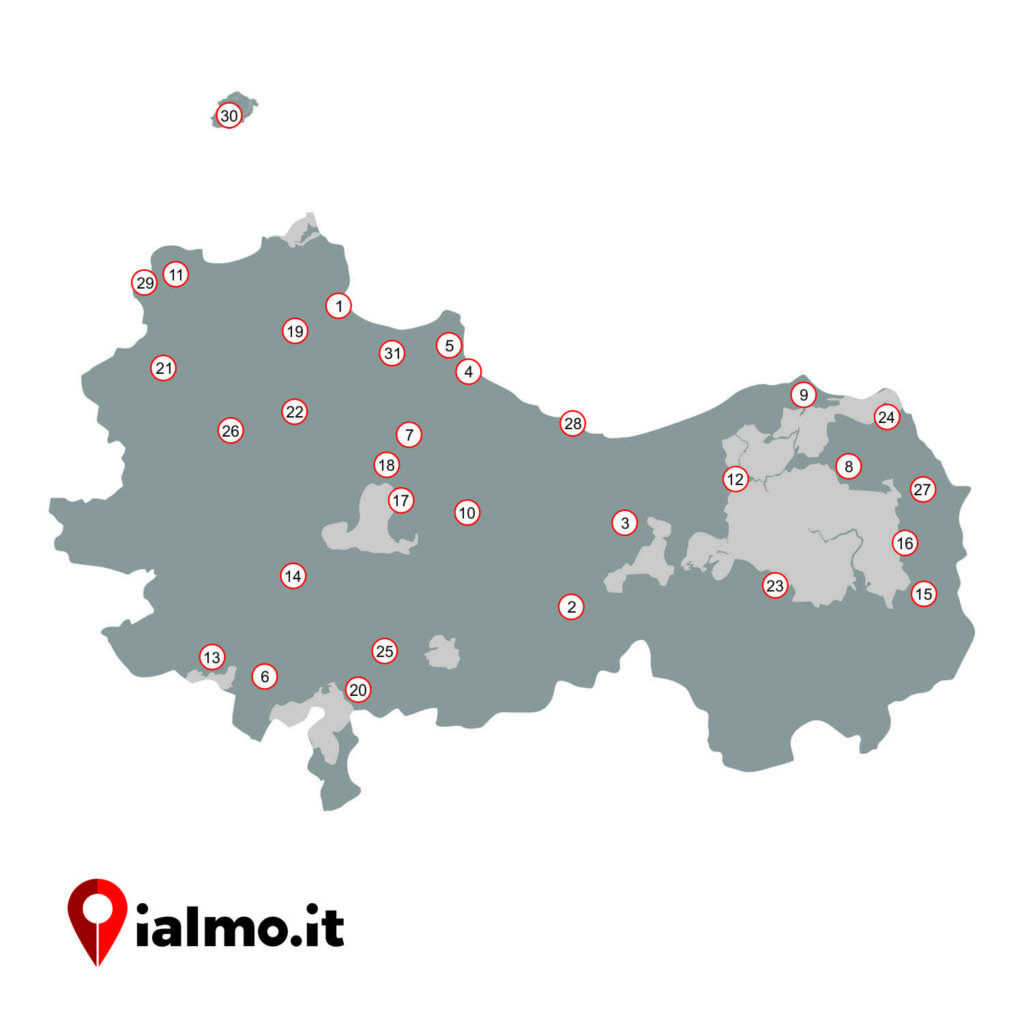
Antonio Salinas Regional Archaeological Museum: it has one of the richest collections of Punic, Greek and Etruscan art in Italy as well as prehistoric, Egyptian and Roman artefacts; GAM: the Sant’Anna Modern Art Gallery exhibits works by important artists such as Francesco Lojacono, Michele Catti, Ettore De Maria Bergler, Giuseppe Sciuti, Antonino Leto, Guttuso, Campigli, Carrà, Casorati, Sironi, Greco and De Chirico; Palazzo Branciforte: designed by Gae Aulenti and opened in 2012, the building houses in addition to the Museum a conference room and the Gambero Rosso cooking school with adjoining restaurant; Regional Gallery of Sicily Palazzo Abatellis: set up in 1954 by Carlo Scarpa, it preserves a vast collection of medieval and Renaissance works of art including the Annunziata by Antonello da Messina and the Triumph of Death; RISO Museum: it is the most important contemporary art museum in the region and hosts works by important artists such as Emilio Isgrò, Carla Accardi and Pietro Consagra; Sicilian Ethnographic Museum Giuseppe Pitrè: in the rooms of the Museum the customs and traditions of the Sicilian people are documented through a collection that includes arts and crafts, vehicles, the Sicilian cart, the puppets, the glass paintings, the brotherhoods, the cribs, the games children, magic, votive offerings, etc .; Antonio Pasqualino International Marionette Museum: hosts puppets and puppets from all over the world; Palazzo Mirto: shows the typical decoration of a Palermitan noble palace dated between the seventeenth century and the nineteenth century; Museum of the Risorgimento Vittorio Emanuele Orlando: in the Museum are preserved paintings, medals, sculptures and relics with the history of the Risorgimento and the enterprise of the Thousand; Museum of Islamic Art: it is located in the Palazzo della Zisa and houses beautiful artifacts of artistic origin; Treasure of the Cathedral: preserved in the crypt, includes a very precious collection of sacred objects and jewelry from the Norman period to the nineteenth century;Treasure of the Palatine Chapel: includes sacred vestments, liturgical objects, precious objects and a tabularium with parchments from the eleventh to the eighteenth century; Diocesan Museum: founded in 1927, it collects works of sacred art ranging from the Norman period to the nineteenth century; Museum of the Sea of the Arsenal of Palermo: you can admire eighteenth-century cannons and portolani as well as scale reproductions of scialbecchi, galleys and ships gunboats; Toy Museum Pietro Piraino: collects toys from various eras, from the Renaissance to the post-war period; Museum of Costume Raffaele Piraino: collects gala, walking and visiting clothes, children’s clothing, ecclesiastical, military, accessories and fashion curiosities; Palazzo Steri Museum: dedicated to the Inquisition, you can visit the prisoners’ cells and the graffiti found inside them (drawings of human figures and invocations of prisoners accused of witchcraft); Multimedia Museum on the Sicilian Intangible Cultural Heritage: housed in the eighteenth-century Palazzo Bonocore; Aptico Museum: tactile museum for blind people on Sicilian monuments; Museum of Paleontology and Geology Gaetano Giorgio Gemmellaro: is one of the main Italian geological and palaeontological museums. The collection’s assets are estimated at around 600 thousand finds; Botanical Garden: founded in 1779, it is the largest in Europe; Museum of Radiology: it collects radiology and physics equipment from the nineteenth century onwards, scientific publications of historical interest and documents and correspondence of the masters of radiology of the past; Museum of the Astronomical Observatory of Palermo Giuseppe S. Vaiana: housed in the premises of the ancient Palermitan Specola, it includes a rich collection of astronomical instruments, clocks, meteorological and topographical instruments, physics and geomagnetism apparatus; Historical Museum of Engines and Mechanisms: located in the Department of Mechanical Engineering and collecting a vast collection of engines and mechanisms from the second half of the nineteenth century; Museum of Mineralogy: it is the University Museum and houses a collection of Meteorites and thousands of samples of minerals, often rare, from all over the world; Museum of Earth and Space: located at Villa Filippina.
Theaters Teatro Massimo Vittorio Emanuele: it is the largest theater in Italy and one of the largest lyrical theaters in Europe (world famous for its perfect acoustics with its horseshoe-shaped hall); Politeama Garibaldi: the second largest city theater in terms of size and importance was designed by Giuseppe Damiani Almeyda in the Pompeian neoclassical style. The entrance, consisting of a triumphal arch surmounted by the bronze quadriga of Apollo, is the work of Mario Rutelli. The Sicilian Symphony Orchestra, established in 1951, has its headquarters since 2001 at the Politeama Theater; Garibaldi Theater: it was inaugurated in 1861 by Giuseppe Garibaldi who gave a speech; Teatro Biondo: inaugurated in 1903, it is in pure nineteenth-century style but endowed with evocative Art Nouveau furnishings; Teatro Massimo: in Art Nouveau style, it was designed by the architect Giovan Battista Santangelo; Teatro di Verdura: used during the summer for the performances of the Teatro Massimo; Santa Cecilia Theater: hosts the concerts and cultural events of the Brass Group Foundation; Zappalà Theater: founded on 9 February 1996 by Franco Zappalà and his brother Nino; Teatro Libero: born in 1968, it is the theater of experimentation and the avant-garde of Palermo. Ditirammu Theater: it is the theater of song and popular tradition; Teatro Lelio: it is the most modern and contemporary theater in the city; Bellini Theater: located in the Kalsa district, the Regio Teatro Carolino, built in 1726, was renamed Teatro Bellini only in 1848.
In the municipality there are the Museum-Archive for Photography of Sicily and the Mediterranean and the Ethno-anthropological Museum. The latter is located in via San Giuseppe in the two floors of the “Pittà” house and houses objects from the private collection of prof. Rosario Di Vitale who carried out a research and collection of testimonies of the agro-pastoral culture of Alia. On display tools and tools used in past centuries and coming from small local farms.
Case Museo Contadine, Aliminusa: in 2016 the municipal administration inaugurated the project of the Case Museo electing Aliminusa “Country of peasant culture”. The project starts with the identification of typical houses, the so-called “terrane”, built in the period between the birth of the country (around 1600) and the fifties of the twentieth century. These houses had the triple function of housing the peasants, sheltering the animals and storing provisions.
Of notable originality is the Museum of the Votive Squares within the Sanctuary. Here are collected 400 votive paintings ranging from 1840 up to today and depicting the graces received through the intercession of Our Lady of Milicia. To make an artistic work of undoubted inventiveness is the fact that they are painted on the tin boxes of the containers of salted sardines. Some pictures of the early twentieth century would be from the school of Renato Guttuso, others are the work of a famous painter of Sicilian carts, Michele Ducato.
Museo Guttuso: inaugurated in 1973, it houses the works donated by the master to his hometown as well as works by other important 20th century artists such as Cagli, Mario Schifano, Onofrio Tomaselli, Silvestre Cuffaro, Domenico Quattrociocchi, Pina Calí and Giuseppe Pellitteri;
Toy Museum and the Pietro Piraino Wax Museum: exhibits about 1600 toys produced from the II century BC at 1900 and 100 wax works dating back to the eighteenth and nineteenth centuries;
Museum-Observatory of Contemporary Art in Sicily: it is a private museum of contemporary art founded by the gallery owner Ezio Pagano in 1997.
The Museum houses the Historical Archive of Sicilian artists of the twentieth century (ASAS), a collection of photographs and paintings and sculptures of various Sicilian artists such as Carla Accardi, Pietro Consagra, Piero Guccione, Emilio Isgrò, Augusto Perez, Antonio Sanfilippo, Salvatore Scarpitta, Fosco Maraini, Ferdinando Scianna and Giuseppe Tornatore.
Ethno-anthropological civic museum: set up in the former Capuchin Convent, you can admire the reconstructions of life scenes prior to industrialization and Greek-Punic finds from the 6th / 5th century BC .; Clock Museum: collects testimonies from the Scibetta family’s handcrafted tradition, watchmakers from the eighteenth century until the late eighties. The Scibettes were masters in the manufacture of tower clocks and for this reason in the Museum we can also see the Universal Geographical Clock that synchronizes the Italian time zone with the most important time zones in the world.
In the historic center of the village you can visit the Museum of the Peasant House set up in an ancient country house of the early twentieth century. In the Casa Museo the tools used in the fields are collected and the old interiors are reconstructed: for example, tannure with the oven, the manger for the animals and the parmentu, ie a deposit for cereals, are present.
Located inside the Ventimiglia Castle, the Civic Museum is the cultural institution to which the municipal administration has entrusted the conservation and enhancement of the city’s historical-artistic heritage. The Natural History Museum Francesco Minà Palumbo is still worth mentioning in Castelbuono, where the huge naturalistic collection of the same name is preserved, as well as a small archaeological section that documents the existence of some Neolithic settlements in the municipal territory. Still the Museum of the Risorgimento “I Viaggi”, inaugurated on December 11, 2016, holds in four large rooms set up in the premises of the former prison of Piazza Margherita the Garibaldi memorabilia donated by Francesco Romeo, honorary inspector of the Cultural Heritage of the Sicilian Region.
The Municipal Museum Mandralisca houses the artistic and archaeological collections of the baron and patron Enrico Piraino. The famous Portrait of an Unknown by Antonello da Messina is also kept here.
In the village there is the Ethno-anthropological Civic Museum where it is possible to make an incursion into the history and local traditions.
In the cultural heritage of the village stands the Museum of Carriages of Villa Onorina, a private collection of carriages, carts and transport attacks of all kinds dating from the late eighteenth century to today.
Collesano is home to the Museum dedicated to the Targa Florio automobile competition, of which it was one of the main passages.
The Antiquarium is an archaeological museum that offers the visitor an articulated route through urban planning, culture and artefacts of the town of Entella, from the early Neolithic settlements of the Elimi to those of the Hellenistic and medieval age up to the destruction of the city in 1224 by Federico II.
Pippo Rizzo Civic-Tourist Museum: housed in the sumptuous halls of the Provenzano Palace, it exhibits several exhibits including the findings from the archaeological site of Montagna Vecchia;
San Leoluca ethnographic museum: Demo-ethno-anthropological museum consisting of two rooms (the kitchen and the bedroom) furnished as it was in use until the first half of the twentieth century. Also exhibited numerous tools and work items used by farmers in daily life;
I.D.M.A (International Documentation Center on the Mafia and the Anti-Mafia Movement): contains the documents of the Maxi-trial which marked a fundamental stage in the fight against the Cosa Nostra. The documents testify to the work of magistrates such as Giovanni Falcone and Paolo Borsellino who have paid for their efforts in the fight against the mafia.
The Civic Museum of Gangi is developed in 4 sections: Archaeological Section; Ethno-anthropological section; Arms section and Gianbecchina Art Gallery.
Conceived in 1983 by Vincenzo Piccione and established in 1985, the Ethno-anthropological Museum of the Madonie preserves objects, tools and other testimonies of the ancient rural life.
In an area adjacent to Godrano Godranopoli is born, a place that houses the ethno-anthropological Museum of the rural culture and local pastoral, a collection of objects that recall the life of those places, a space dedicated to the “poet pecoraio” Giacomo Giardina, a Contemporary and traditional art gallery with works by Picasso, Guttuso, Brogne, Levi and a library rich in Sicilian history and culture. Godranopoli was wanted by Francesco Carbone and represents the cradle of the historical culture of the local civilization that unites the past, the present and the future.
The Castle houses the Regional Archaeological Museum of the Eleuterio Valley.
The former Benedictine monastery now houses the Civic Gallery of Modern Art named after Giuseppe Sciortino, its first curator and director.
The Municipal Museum located in Piazza Umberto I is divided into various sections: the Geo-Naturalistic Museum of the Permian del Sosio, the dedicated section of the Albanian culture (Arbëreshe), the photo gallery taken from the film Nuovo Cinema Paradiso, a film photo-video section , the Water Museum and the Book Museum.
The Civic Museum of Partinico is made up of three different sectors: the Pinacoteca, the ethno-anthropological section and the Antiquarium which houses a collection of ancient artefacts found in the territory.
Civic Museum named after Nicola Barbato: built in 1989, the museum houses collections that refer to the material culture and the traditional arbereshe costume.
In the village you can visit the Archaeological Museum (at the Jesuit College) and the Madonita Environmental Museum (in the Notarbartolo Palace).
Worthy of note is the recently constructed Pietrarosa Theater, built according to the Greek style.
The Mountain Cavalli Archaeological Museum, inaugurated on May 20, 2000, contains important finds from the second half of the 4th century BC. Among the finds of particular archaeological value are the fragments of two diadems in gilded silver on a bronze base recovered in the western necropolis of Montagna dei Cavalli (Hippana), a pyxis (or a votive vase that presents on one side the image of a woman sitting and on the other side a male figure dancing) and a golden silver laminette.
Jetino Antiquarium: houses the finds found during the excavations of the ancient site of the city such as medieval pottery from the Temple of Aphrodite, vascular material and one of the two squatting lions that decorated the rows of steps reserved to the authorities sideways;
Ethno-anthropological museum: founded in 1989 under the guidance of Professor Francesco Carbone, inside it were rebuilt the rooms of the peasant houses and the agricultural cycles of wheat and grapes.
The ethno-anthropological Museum is housed in the old Town Hall Building.
The Civic Museum is dedicated to Baldassarre Romano, a Termitian archaeologist who lived in the nineteenth century, and houses a collection of gold and silver coins of Roman coinage from various cities of the so-called Magna Graecia. In the rooms there are also finds from the Paleolithic, Roman and Arabic periods: paintings, tapestries, sculptures and precious objects.
Palazzo D’Aumale welcomes the valuable Civic Museum in whose rooms are exposed the naturalistic, archaeological and ethnographic sections. The Museum also houses the permanent historical collection of the Sicilian Cart.
The Archaeological Museum collects remains and materials of the settlements of the ancient civilizations of Ustica dating back to the Middle Bronze Age (1400-1200 BC).
The Teatro delle Palme, named for the large old trees planted at its entrance, was built in the mid-fifteenth century at the behest of the Fontana family and designed by the engineer Pietro Villa.
